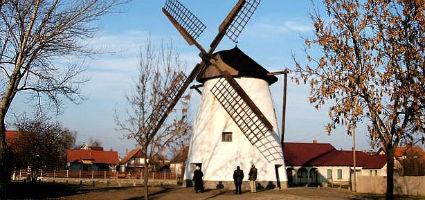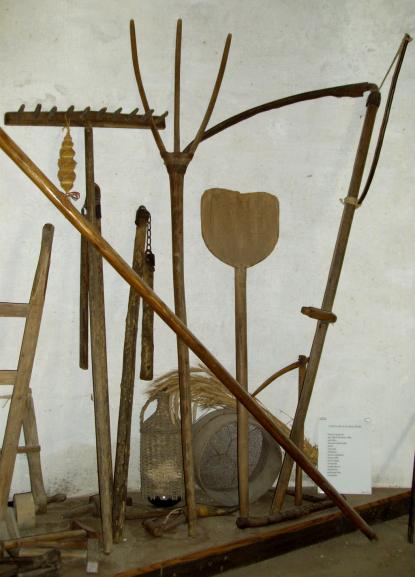2024. November 22. Friday
Dorozsma Windmill - Szeged - Kiskundorozsma
 |
Address: 6791, Szeged - Kiskundorozsma Szélmalom u. 2/A
Phone number: (62) 463-112, (20) 954-2124
E-mail: szelmolnar51@freemail.hu
Opening hours: 01.03-30.10.: Tue-Sun 14-18
|
Museum tickets, service costs:
|
Ticket for adults
|
150 HUF
|
|
|
Group ticket for adults
(over 10 people)
|
100 HUF
|
|
|
Ticket for students
|
100 HUF
|
|
|
Ticket for pensioners
|
100 HUF
|
Combines appeared on the scene at the end of the 19th century. Before, crop was harvested with hand, with wooden rake, scythe, sickle, etc, objects. For thrashing flappers and sprinkler shovels were used.

Men did the scything while women gathered and binded the crop.
Men piled up the binded crop and transported them back home on coaches.
The thrashing of seed was performed in the barn or yard. Crop was either flappered or trampled by horses. Following this stage, seeds were put out to dry while they were sometimes turned over by shovels. After they dried completely, the seed was put in sacks and only the best wind was awaited to move the paddles of the mill.

Men did the scything while women gathered and binded the crop.
Men piled up the binded crop and transported them back home on coaches.
The thrashing of seed was performed in the barn or yard. Crop was either flappered or trampled by horses. Following this stage, seeds were put out to dry while they were sometimes turned over by shovels. After they dried completely, the seed was put in sacks and only the best wind was awaited to move the paddles of the mill.
